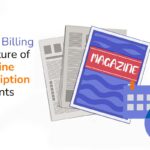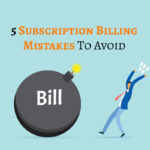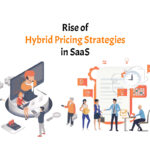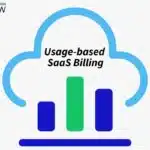
4 Unique Ways to Leverage the B2B SaaS Business Model
Are you a B2B SaaS Company selling software as a service to other businesses?
A major issue that arises, with the B2B SaaS business model, is breaking into the upmarket market as startups develop into scaleups focused on increasing their market capitalization. One way to do that is through finetuning your customer acquisition and revenue-generating strategies such as by offering freemiums and product demos which are critical to growing one’s clientele.
Another way is utilizing different SaaS marketing strategies, such as providing high-quality content and expanding product access. This can be done through a variety of platforms, including social media, email marketing, online ads, and content marketing. One of the most fundamental changes any startup can go through is entering this market niche. In their early stages, SaaS software startups typically target the early adopters in the tech or mid-market segments.
They often also use penetration pricing to incentivize their use as they catch up to industry leading competitors with product improvements and feature enhancements. At a certain tipping point, businesses operating off the B2B SaaS business model can tap into product led growth.
In this article, keeping this context in mind of the rapidly changing developments taking place, we will firstly go over the particularities of the B2B SaaS business model, before delving into ways how it can be leveraged to maximise your business’s revenue growth.
Read more: Quote-to-Cash Cycle Made Efficient by Streamlining B2B Processes
What is a SaaS Business Model? (B2B)
Let’s start with some fundamentals on what is a SaaS business model. In the B2B context, the SaaS business model focuses on selling software as a service to other companies that facilitate their operations. It differs from the B2C SaaS business model that instead involves selling software as a service to individual consumers. This indicates that the clients are typically businesses in need of specialized solutions for various aspects of their business operations, including project management, marketing, accounting, and so on. The cloud-hosted B2B SaaS providers charge a recurring fee, typically paid monthly or yearly, for the use of their software, which is accessible from any device.
Previously, software needed installation into the company’s hardware creating significant customer support cases as well as development friction. Every software that is installed on a customer’s hardware is susceptible to errors made by the operator, variations in system configurations, and interactions with other installed software. This needs to be considered in the development process as well as handled as a customer support issue.And precisely because of the nature of the software, businesses that provide B2B SaaS have infinite potential to scale. The software can be accessed by an infinite number of users without requiring major hardware or infrastructure changes because it is delivered over the internet. This implies that a business-to-business software as a service company can grow and add new clients without experiencing major expenses or setbacks.
Furthermore, B2B SaaS companies’ recurring revenue model offers a steady and predictable revenue stream that enables improved financial planning and growth investment. The supplier can make investments in customer service, sales, and marketing as the clientele expands and the company gains more traction.
Understanding the painpoints of B2B SaaS Businesses
Companies selling B2B SaaS also encounter some unique needs that differ from the needs of B2C SaaS companies. A B2C SaaS startup, for instance, might be more inclined to offer free trials and low-touch products. However, many B2B SaaS startups instead opt for demos and more high-touch approaches initially.
Furthermore, B2B sales necessitate contract lifeccyle management, esignature app integrations, quote-to-cash streamling and seamless integrations with other SaaS tools. This is especially true when dealing with enterprise business clients. With unique clients needs and operational requirements B2B SaaS businesses need the help of dedicated SaaS billing software that automates and streamlines B2B sales and lifecycle management.
4 Unique Ways to Use the B2B SaaS Business Model to Grow Your Bottom Line
Now that we have the bases covered lets dive into the 4 unique ways to put the b2b SaaS business plan to work that actually help you scale.
1. Promoting products that are low-touch: Low touch products refer to software as a service that is made so that most users can try it out and purchase it without needing to engage in prolonged one-on-one communication with a salesperson. The website of the software, email marketing, and (often) a free software trial are the main sales channels. The trial is heavily optimized to make it incredibly easy to start, onboard, and successfully use the SaaS over time.
Many B2B startups make the mistake of dedicating most of their resources to onboarding and training instead of developing the product into a self sufficient piece of tech that is user friendly and intuitive to use. For B2B SaaS businesses looking grow past their startup stage, it is vital to invest a lion’s share of early investment capital in building a customer-centric team that develops your software to become self sufficient. SaaS companies that fail to do this cannot hope to scale. Even though B2B invariable involves more onboarding, customer support interactions than B2C SaaS products, the end goal is to create a software that speaks for itself.
Although sales teams are occasionally involved in low-touch products, they are usually organized as “Customer Success” teams, whose primary goal is to successfully onboard trial users and convert them to paying customers before the trial period expires.
This takes a lot of work off your plate and creates enough room for you to innovate and develop new features and functionalities.
2. Have a practice of onboarding that is easy to follow: Because the software infrastructure is cloud-based, onboarding is simpler for B2B SaaS companies. B2B SaaS providers frequently provide clients with simple-to-use interfaces and straightforward workflows that facilitate their rapid uptime. By enhancing the customer experience and lowering the learning curve, this can increase customer satisfaction and retention rates.
Many B2B SaaS startups make the mistake of not paying enough attention to their onboarding flows. This can be catastropic as the customers you push down your sales funnel may never activate or use their account, due to friciton in the onboarding flow. Such friction churning out your customers is a huge setback in your revenue generating capabilities. Especially if you think of the marketing dollars and effort you spent maturing leads and bringing them to a conversion stage. Having a well defined structure for onboarding that requires minimal input from your team customers can get their accounts up and running at the end of their trial. Optimized onboarding flows have a strong impact on your trial conversion rate and need to be paid close attention to.
3. Tap into the power of Social Media: For good reason, a company that specializes in B2C SaaS uses social media very differently than one that sells B2B SaaS solutions. One distinction is the platforms they initially gravitate towards. Whereas Instagarm and TikTok with a front-facing and relatable approach have become powerhouses in advertisment and influencer marketing for B2C SaaS, they understanably don’t work as well for B2B SaaS.
Having said that, it is simply untrue that there is nothing to be gained from social media in the B2B space. Professional networks, which encourage a more somber, business-oriented approach to social media use, are highly favored by B2B SaaS companies. YouTube and LinkedIn (and even TikTok these days!) are sizable, incredibly flexible platforms that work well for both kinds of businesses.
This also includes influencer marketing in your business niche which can prove promising.
4. Incorporate a sales approach that is multi-faceted and hybrid:
Many businesses have successfully navigated the complexities of incorporating both high-touch and low-touch operations while offering the same functional product. This approach is however rarely used especially when you consider the prevalence of SaaS companies and what proportion opt for this b2b saas business plan.
There are businesses that successfully manage both high-touch and low-touch operations using the same functional product. When two models are tried simultaneously,the typical outcome often sees only one gaining significant traction This phenomenon occurs primarily due to the comprehensive integration of these models into every facet of the business, ultimately leading to one model overshadowing and stifling the other’s potential.
Having said that, it can be useful for a startup to experiment with different sales approaches until they can optimize their customer acquisition and retention rates to fuel growth. Experiment with flexible pricing models, custom billing logic, offer free trials vs freemiums vs demos and see what works best for your target market and business niche. Competitor analysis can be invaluable in this regard.
Read more: How Dynamic Pricing Makes It a Good Fit for B2B Subscription Management for Enterprises?
How Can SubscriptionFlow Help Businesses Implement These Strategies?
SubscriptionFlow’s subscription management software offers access to tools and features that make it simple to create and manage subscription plans, track and analyze customer behavior and feedback, and optimize pricing and marketing strategies, Flexible SaaS billing software can assist businesses in putting these creative uses of the B2B SaaS business model to work in leveraging their revenue growth. Additionally, SubscriptionFlow can assist companies in integrating their subscription service with other platforms and services like analytics software, email marketing tools, CRM systems, and payment gateways. Businesses can create recurring revenue streams from their products or services that expand with their clientele with the aid of SubscriptionFlow.
If you are selling B2B SaaS to startups, SMEs or enterprises, SubscirptionFlow offers a host of different features that can help you simplify your subscriptions and grow your bottom line.
Book a demo with SubscriptionFlow now to start implementing all these brilliant strategies for your B2B SaaS business model!













